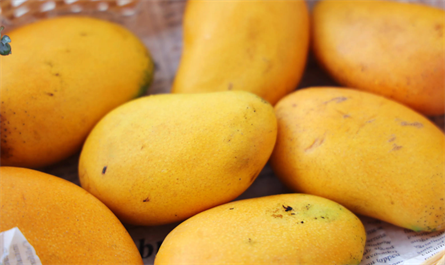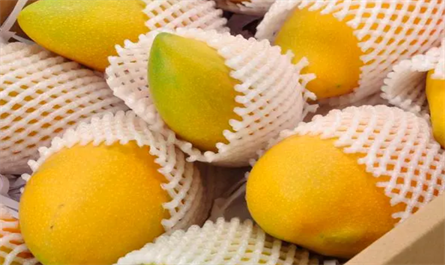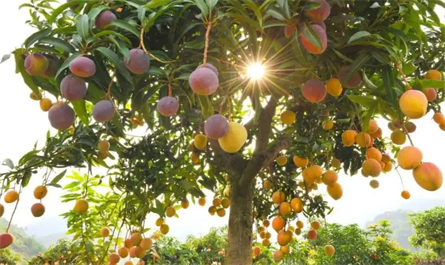Application of plant growth regulators on fruits plantation-Mango
What are the commonly used plant growth regulators for planting mango? What is the effect of plant growth regulator on mango? What is the function of mango commonly used growth regulator?


1, auxins: mainly eindole butyric acid (1BA), naphthalene acetic acid (NAA), phenol compound - dichlorophenoxyacetic acid (2, 4-D) and so on. The application of auxin on mango is mainly to promote rooting, prevent falling fruit, reduce flowers and fruits, change the Angle of branches, inhibit the occurrence of tillering branches, promote the occurrence of short branches, etc.
2, gibberellin: gibberellin is divided into GA1, GA2, GA3, etc., of which GA3 is the main commodity product, that is, 920. Gibberellin is a widely existing plant hormone, and its main effect on mango is to promote the remarkable elongation of shoots, fruit setting and fruit growth. It showed different physiological reactions depending on the time and concentration of application.
3. Cytokinin: There are 6 kinds of synthetic cytokinins, and the commonly used ones are 6-benzylaminopurine (BA, BAP) and BPA. Its functions are mainly to divide and expand cells, delay the senescence of mango leaves, promote the development of lateral buds, and also participate in the control of flower organ sex performance. In the presence of 1AA, cytokinin can strongly stimulate growth and increase the contents of auxin, gibberellin and ethylene.
4. Ethephon: ethephon can slowly decompose and release ethephon after entering the plant body, which plays a regulating role in plant growth. Its effect on mango is mainly to inhibit the growth of new shoots, promote the formation of flower buds, remove fruits and flowers, promote maturity, delay the flowering period, and early dormancy. Different concentrations of ethephon had different effects on mango.


5, B9: B9 is a growth retarder, its chemical name is succinic acid -2, 2-diformylhydrazine (SADH). The initial effect of B9 is to inhibit the formation of B-indoleacetic acid (auxin) in plants, thus acting as a growth inhibitor. It can shorten the growth of new shoots, promote flower bud differentiation, inhibit fruit growth, and enhance the storage and transportation of fruit.
6, polybulozole: Polybulozole is a low-toxicity and effective plant growth retarder used in mango in recent years. It can inhibit the biosynthesis of gibberellin in apical meristem cells, thus inhibiting internode elongation, delaying growth, and also antagonizing the synthesized gibberellin. Polybulobuzole inhibits vegetative growth, and also changes the distribution of assimilative nutrients in plants, which is conducive to flower formation and fruit setting. It can be applied to soil, absorbed by roots and transported upward through xylem. When applied on the ground, it can be absorbed by young stems and young leaves. The efficacy of polybutrazole has a long duration, and the operation and decomposition are very slow. The efficacy of soil application can last for 3 to 4 years, and the efficacy of clay application is longer than that of sand.


1, auxins: mainly eindole butyric acid (1BA), naphthalene acetic acid (NAA), phenol compound - dichlorophenoxyacetic acid (2, 4-D) and so on. The application of auxin on mango is mainly to promote rooting, prevent falling fruit, reduce flowers and fruits, change the Angle of branches, inhibit the occurrence of tillering branches, promote the occurrence of short branches, etc.
2, gibberellin: gibberellin is divided into GA1, GA2, GA3, etc., of which GA3 is the main commodity product, that is, 920. Gibberellin is a widely existing plant hormone, and its main effect on mango is to promote the remarkable elongation of shoots, fruit setting and fruit growth. It showed different physiological reactions depending on the time and concentration of application.
3. Cytokinin: There are 6 kinds of synthetic cytokinins, and the commonly used ones are 6-benzylaminopurine (BA, BAP) and BPA. Its functions are mainly to divide and expand cells, delay the senescence of mango leaves, promote the development of lateral buds, and also participate in the control of flower organ sex performance. In the presence of 1AA, cytokinin can strongly stimulate growth and increase the contents of auxin, gibberellin and ethylene.
4. Ethephon: ethephon can slowly decompose and release ethephon after entering the plant body, which plays a regulating role in plant growth. Its effect on mango is mainly to inhibit the growth of new shoots, promote the formation of flower buds, remove fruits and flowers, promote maturity, delay the flowering period, and early dormancy. Different concentrations of ethephon had different effects on mango.


5, B9: B9 is a growth retarder, its chemical name is succinic acid -2, 2-diformylhydrazine (SADH). The initial effect of B9 is to inhibit the formation of B-indoleacetic acid (auxin) in plants, thus acting as a growth inhibitor. It can shorten the growth of new shoots, promote flower bud differentiation, inhibit fruit growth, and enhance the storage and transportation of fruit.
6, polybulozole: Polybulozole is a low-toxicity and effective plant growth retarder used in mango in recent years. It can inhibit the biosynthesis of gibberellin in apical meristem cells, thus inhibiting internode elongation, delaying growth, and also antagonizing the synthesized gibberellin. Polybulobuzole inhibits vegetative growth, and also changes the distribution of assimilative nutrients in plants, which is conducive to flower formation and fruit setting. It can be applied to soil, absorbed by roots and transported upward through xylem. When applied on the ground, it can be absorbed by young stems and young leaves. The efficacy of polybutrazole has a long duration, and the operation and decomposition are very slow. The efficacy of soil application can last for 3 to 4 years, and the efficacy of clay application is longer than that of sand.
RECENT POSTS
-
Comprehensive analysis of the various factors that need to be considered in growing pineapples
-
The key steps of pineapple cultivation include soil selection, sowing, management and pest control
-
What effect does S-abscisic acid have on grapes?
-
Application of plant growth regulators in cherry farming
Featured News



